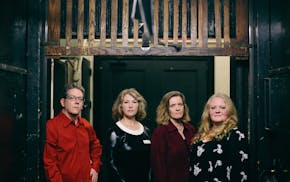Despite the title, "Paul" is not the story of Paul, but the story of Frances Hawthorne, a young British woman living in France. The title, though, is a clue: Frances is young and insecure, drawn to domineering older men who take over her life.
One man — her thesis adviser, A.B. — brings her to France and then discards her. Another man, Paul, nearly succeeds in finishing off whatever self-regard Frances has left.
The novel is a gripping but painful read. To heal from A.B., Frances leaves Paris to volunteer on a series of sustainable farms in the countryside. But instead of places of growth and healing, the farms turn out to be complicated places, run by selfish people.
Paul is the charismatic owner of Noa Noa, a sort of artist commune / organic farm he established after an extended stay in Tahiti. (There is more than a bit of Gauguin in this man.) Their relationship is foreshadowed when he and Frances meet: His face looms in the car window, and "I find myself caught in [his] teeth. ... I fall out of his teeth and into his shadow."
Paul seduces the passive Frances and then tries to lock her to him by telling her how much he needs her, how perfect a mate she is for him. Run! The reader wants to shout.
The story of a bright young woman ensnared by an older man is a familiar one. Poet Daisy Lafarge tells it well, in hypnotic prose, laced with the buzzing of insects, the burning of hot sun, the intensity of the man. It is a sensuous pleasure to read as this gaslit woman first loses, then slowly regains, her voice.
Laurie Hertzel is the senior editor for books at the Star Tribune.
Paul
By: Daisy Lafarge.
Publisher: Riverhead, 304 pages, $26.

The 5 best things our food writers ate this week

A Minnesota field guide to snow shovels: Which one's best?

Summer Camp Guide: Find your best ones here

Lowertown St. Paul losing another restaurant as Dark Horse announces closing
